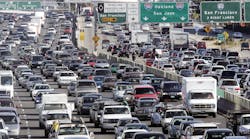When was the last time you performed an in depth routing analysis? If you can’t remember, now might be a good time to do one.
The best place to begin is by throwing out all existing constraints. In other words, eliminate any “real world” hurdles or roadblocks such as specific delivery days or windows, customer preferences, load ready times or vehicle configuration types. With the exception of DOT legal requirements, literally start with a clean slate.
On the first pass through this exercise, act as if you are operating in a perfect world which is completely unaffected by weather, traffic, client requirements or pressure from sales. While the result will most likely be unrealistic, what is the optimal routing and resource utilization model that you can develop?
But because we know that the trucking world is not perfect, you’ll need to slowly add back those things that you have no control over, like curfews for example. Many cities and municipalities have regulations preventing you from operating and unloading during certain times of the day. Also consider parking and vehicle maneuverability constraints. You need to be aware of these types of obstacles so that the finished version of your new routing plan is executable in the real world.
Next turn your attention to the equipment you have and ask yourself what if you used a different vehicle configuration for a route? Look at any leasing or other financial obligations on existing equipment. Is it possible to change your vehicle mix? Analyze how often your trucks are leaving fully loaded. Are there opportunities to make changes so that more trucks will go out with maximum payload?
Finally look at each individual customer, or your customers’ customer, and evaluate what they need as well as what they want. Can you change their delivery days or times? What about their order frequency? Do the same with your drivers. Are there some that only want to work a specific shift? Can you improve their quality of life with a consistent schedule or route?
Your goal is to develop a route design model that allows you to utilize your vehicles and personnel most effectively, while providing the highest level of service to your end customer.
Routing analysis has a lot of moving parts, but don't get caught up in historical assumptions and “have to’s.” Rather start constraint free, factoring in customers’ needs, operating constraints, vehicle configuration and availability of personnel. Undoubtedly you will begin to “see” new ways of approaching your operational model that will result in productivity improvements.



